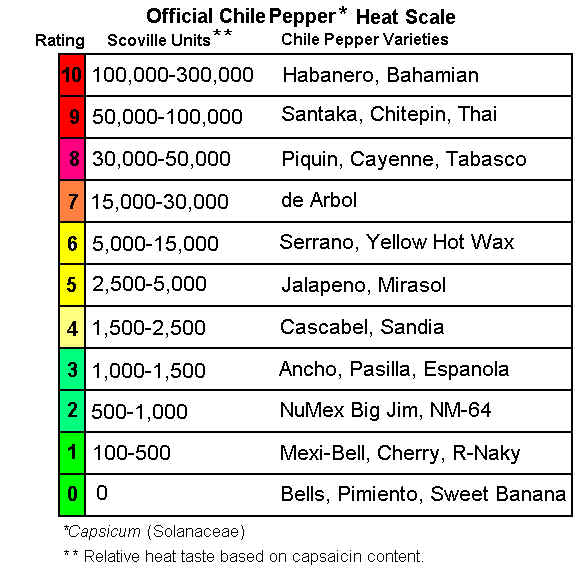
Chili Pepper Official Heat Scale
Chili Peppers = Capsicum annuum, Capsicum frutescens
Pepper is the name of the pungent spice from the ground fruits and seeds of Piper nigrum, an Old World, tropical vine. When Europeans discovered the New World they were expecting the spice islands of SE Asia, and so called them the Indies and their native inhabitants, Indians. They also misnamed a pungent spice transferring the name pepper to chilis. Botanists use both names, chili pepper, to avoid some of the confusion. Chili remains the general name in Central America, and the various varieties are recognized by adjectives: chili habanero, chili serrano, chili ancho, chili pequin, etc.
Today the many varieties of these fruits are used as vegetables and flavorings in so many cultures that many people assume chili peppers are native to their regions. The chili pepper fruits come in many shapes, sizes, colors, and heat. Some are eaten immature as vegetables (bell or sweet peppers); others are ripened and dried. Chili peppers are high in vitamin C and A.
The heat comes from an oleoresin capsiacin, which is found in highest concentration in the ridges of tissue that bear the seeds. If you cut open a jalapeņo pepper, you may see an orange color on these ridges. The heat can be greatly reduced by cutting this tissue out, but make sure you don't put your fingers in your eyes afterwards! In Central America, children were punished in some cultures by applying chilis to their eyes or genitals!
Below is the official chili pepper heat scale based both upon units of taste and the concentrations of capsiacin the fruits contain. The most common varieties are named for each category.
